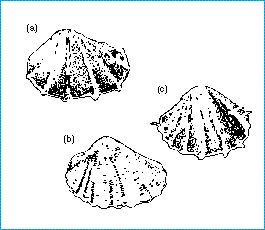Evolutionary developmental biology - How does evolutionary change in an organ occur?

Heterochrony
A heterochronic change is, in general, a change in the rate or timing of development of some cell lines in the body relative to others. A mutation that alters the rate at which a cell line develops relative to other cell lines is a heterochronic mutation.
Consider the rates of development of the reproductive (germ) cells on the one hand, and all the rest of the body (the soma) on the other. Any particular body becomes reproductively mature at a certain stage of somatic development; a heterochronic change in this case is one in which the organism comes to reproduce at an earlier (or later) stage of somatic development. What could cause reproduction to occur at an earlier stage of somatic development?
• Either somatic development is proceeding at the same rate in absolute time as before, and germ line development has speeded up (progenesis);
• or reproduction happens at the same absolute age, and somatic development has slowed down (neoteny). This is seen in fossil cockles. The juvenile Cardium plicatum (a) has fewer ribs than the adult (b) but a similar rib pattern to its descendant C. fittoni. We can infer that C. fittoni is neotenous because of its much greater size - if both species grow at about the same rate, then the development of the ribbing pattern has slowed down.
Either way, the morphological result is the same: paedomorphosis - reproduction is seen in what was ancestrally a juvenile morphological stage.
Also, the form of the adult can be altered by heterochronic changes within the soma, so that different cell lines develop at different rates. The morphological effects of this can be studied by allometry or by transformations.
Figure: the type of heterochronic change known as neoteny has taken place in fossil cockles. (a) Cardium plicatum juvenile, 5mm in length; (b) same species, adult 17 mm long; (c) C. fittoni, 35 mm long, and descended from C. plicatum.
| Next |



